2018
New Traits Available in Soybean Varieties
Happy New Year! Here’s a New Year’s poem/resolution to get you started this year:
Pigweeds are red,
Kochia is too,
I’ll control these weeds,
How about you?
Soybean varieties will be available in 2019 that contain both Liberty Link® and RoundUp Ready® traits. This will provide much more flexibility with herbicide programs and should result in much cleaner fields when glyphosate-resistant weeds are present. The system will require some additional training. Previous studies have demonstrated antagonism between the two products when tank-mixed. We conducted a study at the CREC last season to test different rates and adjuvants with the two products. Application conditions were designed to optimize the Liberty application since it is the more expensive product (i.e. we used 15 GPA). Here is what we learned (Table 1).
Table 1. RoundUp and Liberty combinations for controlling common ND weeds
Assessments in Table 1 were taken 14 days after the herbicide application. In some cases we did identify antagonism, particularly when using 28 fl oz of RoundUp Powermax. Better weed control was achieved at times by using 21 fl oz of RoundUp Powermax when mixed with Liberty. Even when there was no antagonism between the products, there was never an advantage to mixing the products where the combination performed better than either product alone. Essentially, mixing the products would be a waste of money.
Proper stewardship and economics dictate that these two products should be applied separately. Consider the following in-crop sequence for applications: Use Liberty as an early POST treatment to be as effective as possible on small broadleaf weeds (with or without an approved tank-mix partner). Follow-up with a mid-season application of glyphosate (+ tank-mix partner). And of course, your foundation PRE herbicide program will ultimately determine the long-term success of your POST applications.
Mike Ostlie, Ph. D.
Mike.Ostlie@ndsu.edu
Research Agronomist
Quotes and Notes from #digthectc
NDSU Extension and University of Minnesota Extension hosted a Conservation Tillage Conference in Fargo on December 18-19. Over 300 persons attended the event and received information on no-till and strip-till systems as well as cover crops from university scientists, ag industry representatives, crop advisers, and farmers. With the challenges of this 2018 crop season, it was a positive and exciting experience participating in this conference. The following are some selected quotes and notes from the week.
Quotes (and notes) from Steve Groff, Pennsylvania farmer and internationally recognized cover crops coach who was the conference keynote speaker.
- “Agriculture is a profession of hope.”
- “Better to spend your money on management (instead of solving problems with a bag or bottle) or invest in understanding how your soils function.”
- “Treat cover crops like cash crops.”
- “You need to be committed to cover crops for the long-term. Soil management with cover crops is a marathon, not a sprint.”
- Always have a ‘plan B’ with cover crops – there will be challenges/failures.
- “Veteran cover croppers do not ask if cover crops pay – they recognize the long-term value.”
- “Cover crops make fertilizer more efficient.”
- Whether with reducing tillage or adding cover crops on your farm, start small by changing management of 10 percent or less of your acres per year.
Notes
- Organic matter (source – Caley Gasch, NDSU soil health researcher)
- Crop roots are greater contributors to organic matter versus aboveground plant parts.
- Surface crop residue is much better as soil ‘armor’ versus a contributor to organic matter.
- Earthworms are very effective in breaking down soil surface residues and incorporating the material into soil.
- Plant and soil materials must be ‘processed’ by soil microorganisms in order for organic matter to be produced.
- Soil erosion (source – NRCS)
- Thirty percent soil surface residue provides 70 percent reduction in wind erosion.
- Wind erosion generally begins at 6 mph.
- A tablespoon of soil spread on an 8.5- by 11-inch sheet of paper is the equivalent of one ton per acre of soil loss.
- Five tons of soil across an acre of land is similar to a dime’s width. This amount of soil loss per year is considered ‘tolerable’ and likely not noticed during the short-term. But over time (e.g. decades) this continued soil loss will greatly reduce soil productivity.
If you’d like to have a conversation about any of the things that stood out to me at the conference feel free to contact me!

Extension, Industry, Farmers and more gathered for the 14th Annual Conservation Tillage Conference.
Greg Endres
Gregory.Endres@ndsu.edu
Agronomy Extension Specialist
Winter Management for Livestock
One of my favorite smells in this world is the smell of corn silage on a cold winter morning.
As winter officially starts this Friday I will take this opportunity to remind us of a few management practices that will positively impact our livestock operations over the coming months.
Providing bedding and wind protection are critical to livestock performance during the winter in North Dakota. Research at the Carrington Research Extension Center by Dr. Vern Anderson demonstrated the importance of bedding and showed that bedding feedlot steers increased average daily gains compared to non-bedded feedlot steers.
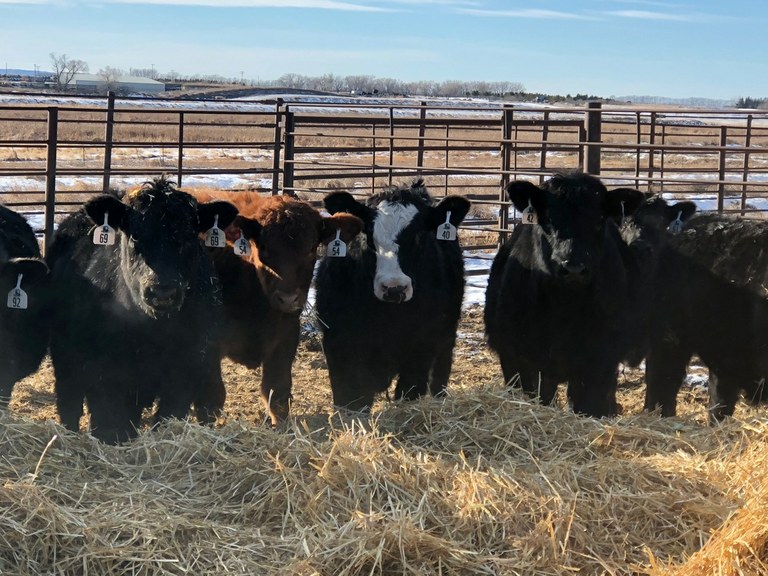
Freshly bedded steers at the Carrington Research Extension Center.
Access to clean water is the next item that comes to mind. The NRC (Nutrient Requirements of Beef Cattle, 2016) states that limited access to water will decrease animal performance. Maintaining clean water fountains and preventing frozen water fountains are important tasks. So while cleaning water fountains, chopping ice, or thawing those frozen water tanks isn’t anyone’s desired job, especially in winter months, it is a must in terms of livestock stewardship.
Pen scraping or cleaning would be another management strategy to consider. Removing snow and manure during the winter may help to prevent muddy conditions in the spring. Muddy and cold conditions increase the energy (feed) requirements of livestock. So take some time to consider pen conditions this winter and try to improve conditions for livestock this coming spring.
The final management practice I would like to mention is silage pit management. In the livestock business, we are also in the business of selling feed, either directly or indirectly. Facing out silage pits minimizes the amount of silage exposed to air, decreasing heating and feed spoilage, and saving feed and decreases costs.
For those of you wanting further reading on winter management of livestock, the North Dakota Agriculture Experiment Station and NDSU Extension have a publication on Winter Management of the Beef Cow Herd available at: https://www.ag.ndsu.edu/publications/livestock/winter-management-of-the-beef-cow-herd/as1564.pdf
With that I wish you all a Happy Holiday Season!
Bryan Neville, Ph. D.
Bryan.Neville@ndsu.edu
Research Animal Scientist
O Christmas Tree
One of the most iconic images of the holiday season, Christmas trees, started as a German tradition and were introduced in the US by German settlers. Live Christmas trees have been sold commercially in the US since about 1850, and more than 30 million trees are sold between Thanksgiving and Christmas each year. Most of these trees are grown on more than 15,000 Christmas tree farms, covering 350 million acres across all 50 states. Oregon, North Carolina and Michigan are the top growers but even North Dakota has five Christmas tree growers, located in or near Cavalier, Hankinson, Minot, Carrington and Towner. In all but the Minot location, you can choose and cut your own tree!

Decorated Christmas Tree
The average price of a live cut Christmas tree is about $45, depending on size and species. The most popular trees are:
- Scotch pine – pleasant fragrance, excellent needle retention and branches stiff enough to hold heavy ornaments. Eastern white pine has soft, long needles, but retention is not as good as Scotch pine and the branches are very flexible – not the best for holding heavy ornaments.
- Fraser fir – very pleasant fragrance, best needle retention, with bright green flat needles that are white on the underside. Branches not quite as stiff as Scotch pine. Balsam fir has similar qualities but needles do not last quite as long.
- Spruce – this is the most commonly grown Christmas tree in North Dakota, including both Colorado blue spruce and Black Hills (white) spruce. Branches are stiff and will support heavy ornaments, but needles are quick to fall – this tree will likely last only a couple of weeks.
Right before placing a live tree inside, cut off the bottom inch of the trunk to open the pores that transport water through the tree. Place the tree in a sturdy stand that holds at least 2 to 4 quarts of water. A tree will use 1 quart of water per day for every inch trunk diameter at the base. Fill the stand and always keep water in it, so the tree’s pores remain active and needles can remain on the tree throughout the holidays. Home remedies such as aspirin, sugar, soft drinks and vodka do not increase the life of the tree and might even be harmful to pets that may drink from the stand.
Some prefer a live tree for its pleasant fragrance, the experience of picking out the tree and the option to recycle the tree after Christmas for a winter bird feeder or mulch. However, more than 60 million homes use artificial trees. The first artificial trees were also of German origin, made using goose feathers dyed green and attached to wire branches. In the 1930’s, green brush bristles were used and the 1960s brought us shiny aluminum trees! A great compromise is to purchase a nice quality artificial tree for convenience, and deck the halls with live boughs for a woodsy aroma. Happy Holidays!

The lighting of the National Christmas Tree has been a tradition for 96 years, started by President Calvin Coolidge.
The 2018 tree is a living Colorado blue spruce transplanted in 1948 from Virginia to President’s Park, near the White House.
Gerri Makay
gerri.makay@ndsu.edu
Community Forestry Program Manager
ND Forest Service
Beef Quality Assurance Certification for Feedlots Is Needed
If you sell fat cattle, you will most likely need Beef Quality Assurance Certification after January 1, 2019 to get a buyer.
Several of the larger beef processers have started requiring beef quality assurance (BQA) certification for fed cattle. Driven by the consumer demand, processors are needing assurances that cattle are properly raised and handled.
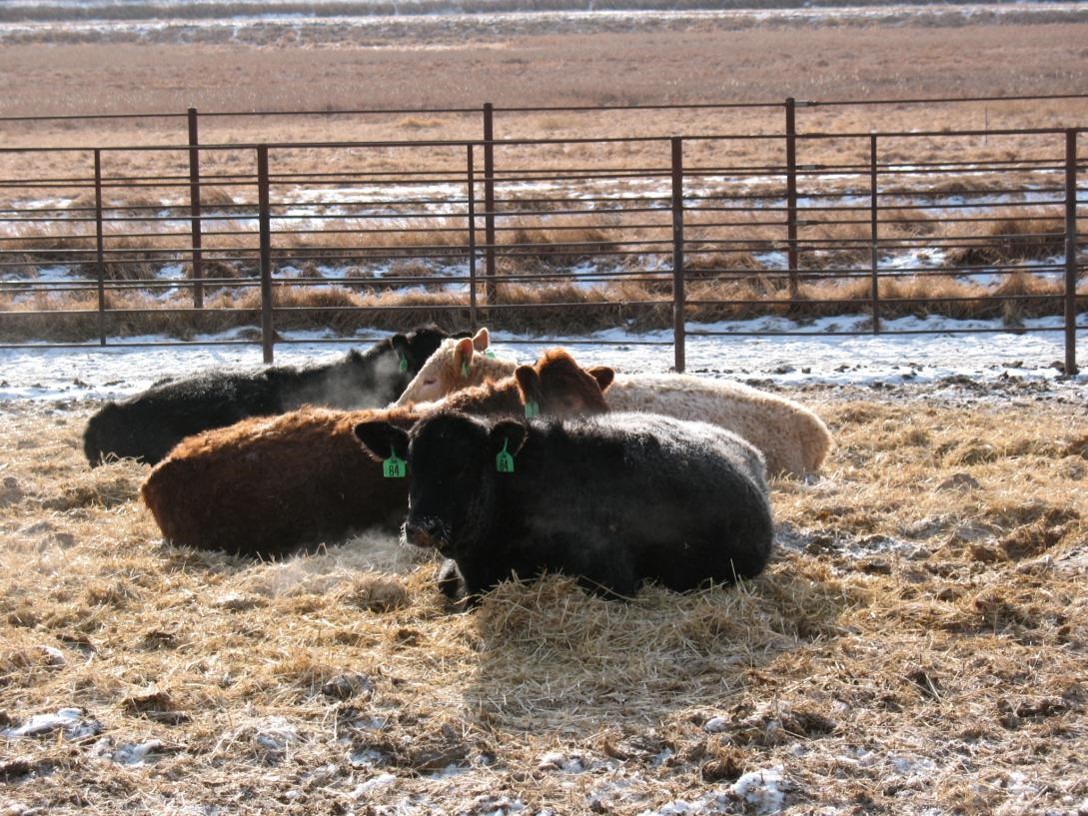
Calves in the CREC feedlot.
This social transparency is needed by the food corporations that buy beef from the processors. Quality assurance is needed to maintain high‐quality beef. Consumers want reassurance that cattle producers are continuing to do an outstanding job of raising high‐quality beef.
Producers can obtain BQA feed yard certification by attending a Beef Quality Assurance session.
Lisa Pederson, NDSU Extension beef quality assurance specialist, will conduct BQA certification meetings specifically for feedlots at three location in North Dakota in December. The 2.5‐hour certification sessions are scheduled for:
- Dec. 6, 2 p.m., Lake Region Livestock Auction, Devils Lake
- Dec. 12. 1 p.m., North Dakota Stockmen's Association's Beyond the Bunk meeting, Ramada by Wyndham, Bismarck
- Dec. 20, 1 p.m., NDSU Carrington Research Extension Center
The cost for BQA certification is $15 for a three‐year certification. Some producers already may be BQA certified if they attended a cow herd certification session.
Another option for BQA certification is to take the online Beef Quality Assurance "feedyard" option. This online session will take three hours to complete and can be found at www.bqa.org/certification/online‐certification.
For more information contact Karl Hoppe, karl.hoppe@ndsu.edu 701-652-2951 or Lisa Pederson, Lisa.pederson@ndsu.edu 701-424-3603.
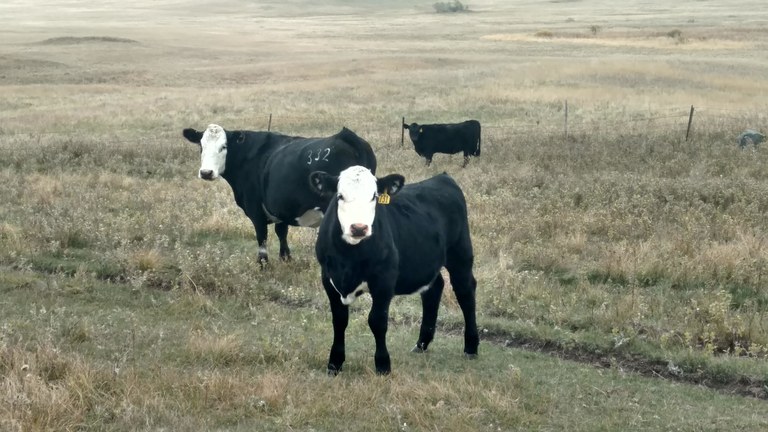
ND cattle on pasture just prior to weaning.
Karl Hoppe
Karl.Hoppe@ndsu.edu
Extension Livestock Specialist
Seed Inoculation Strategies on Fields with Prior Soybean Production
Double inoculation of soybean seed is defined as use of a liquid plus granular formulation of N-fixing bacteria (Bradyrhizobium japonicum) with the seed at planting. Double inoculation is a common practice for soybean grown on fields without prior history of soybean production. Six trials were conducted by the CREC during 2015-2018 to examine potential soybean yield response to single versus double seed inoculation on ground with recent soybean production. The trials were partially supported by the North Dakota Soybean Council.
The trials were conducted at Carrington and the CREC off-station crop research site near Wishek. Trial locations were on ground with one to three years separating soybean crops. Seed inoculant treatments (various commercial sources used at labeled rates) included: 1) non-inoculated check; 2) liquid applied with seed; 3) granular applied in-furrow; and 4) liquid plus granular.
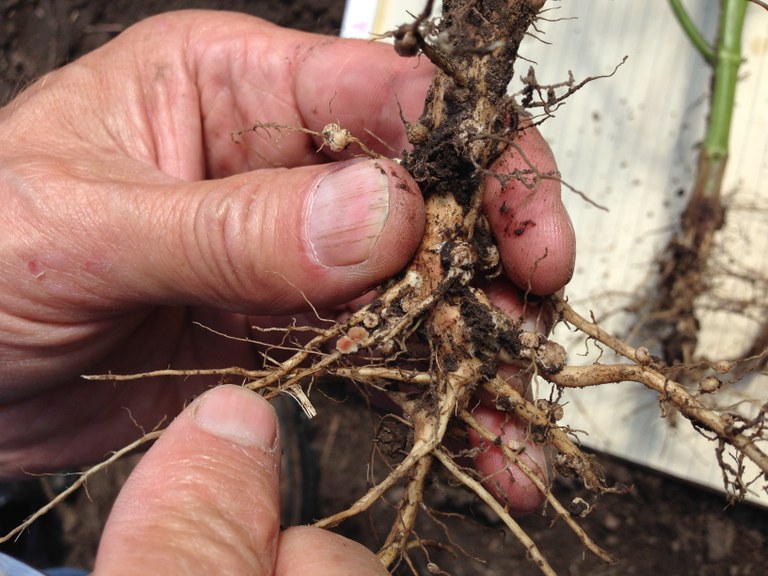
The table shows soybean seed yield results for each trial and the average across the six site-years. Statistically for each trial, yield was similar among inoculant treatments including the non-inoculated check. Averaged across trials, yield also was statistically similar among all treatments, though double inoculation tended to have slightly higher yield versus no or single inoculation. In addition, seed protein averaged across site-years (data not shown) was similar among inoculation treatments and the untreated check.
In summary, this research indicates no seed yield or protein advantage using double- versus single-seed inoculation on ground with recent prior soybean production history.
Greg Endres
Gregory.Endres@ndsu.edu
Extension Agronomist
Additional contributors: Mike Ostlie and Tim Indergaard
Gene Editing: in-gene-ous or gene-ric?
Crop marketing in 2019 may be more difficult than ever worldwide. One more reason for the difficulty is the current tiered system of gene technology. As of now, there are three types of breeding technology that affect the potential of crop import/export around the world: 1) traditional breeding techniques, 2) transgenic techniques, and 3) gene-edited techniques. All world markets accept ‘traditionally bred’ grain. Some markets accept transgenic grain. There is a lot of international debate about where gene-edited grain will fit, but as of now, some countries view it the same as transgenic while others view it similar to traditional breeding methods. The following is some clarification about what’s involved in the different breeding approaches.
Traditional breeding: The term conjures an image of a person in a field transferring pollen from one plant to another. Traditional breeding accounts for nearly all the plant improvement we now enjoy with modern varieties and hybrids (like the evolution of teosinte to modern corn). However, ‘traditional’ breeding uses many cutting edge technologies to aid in crop improvement. Most breeding programs have tools that help identify if a gene of interest was transferred from one plant to another. Various technologies are used to gather useful genes into a single plant, which may become a variety/hybrid if those genes form a trait (i.e. disease resistance or improved yield) that is more beneficial than its predecessors. One of the challenges with traditional breeding is that when a cross between plants is made, many genes from both plants will be present in the progeny, which likely includes a number of genes that have no relevance to the intended makeup of the plant. Because of this, it can take many more generations of crossing plants or some other technological feat to get only the desired traits. A lot of the technology in plant breeding is dedicated to hasten this time-consuming endeavor. This is one key area where the different gene technologies diverge.
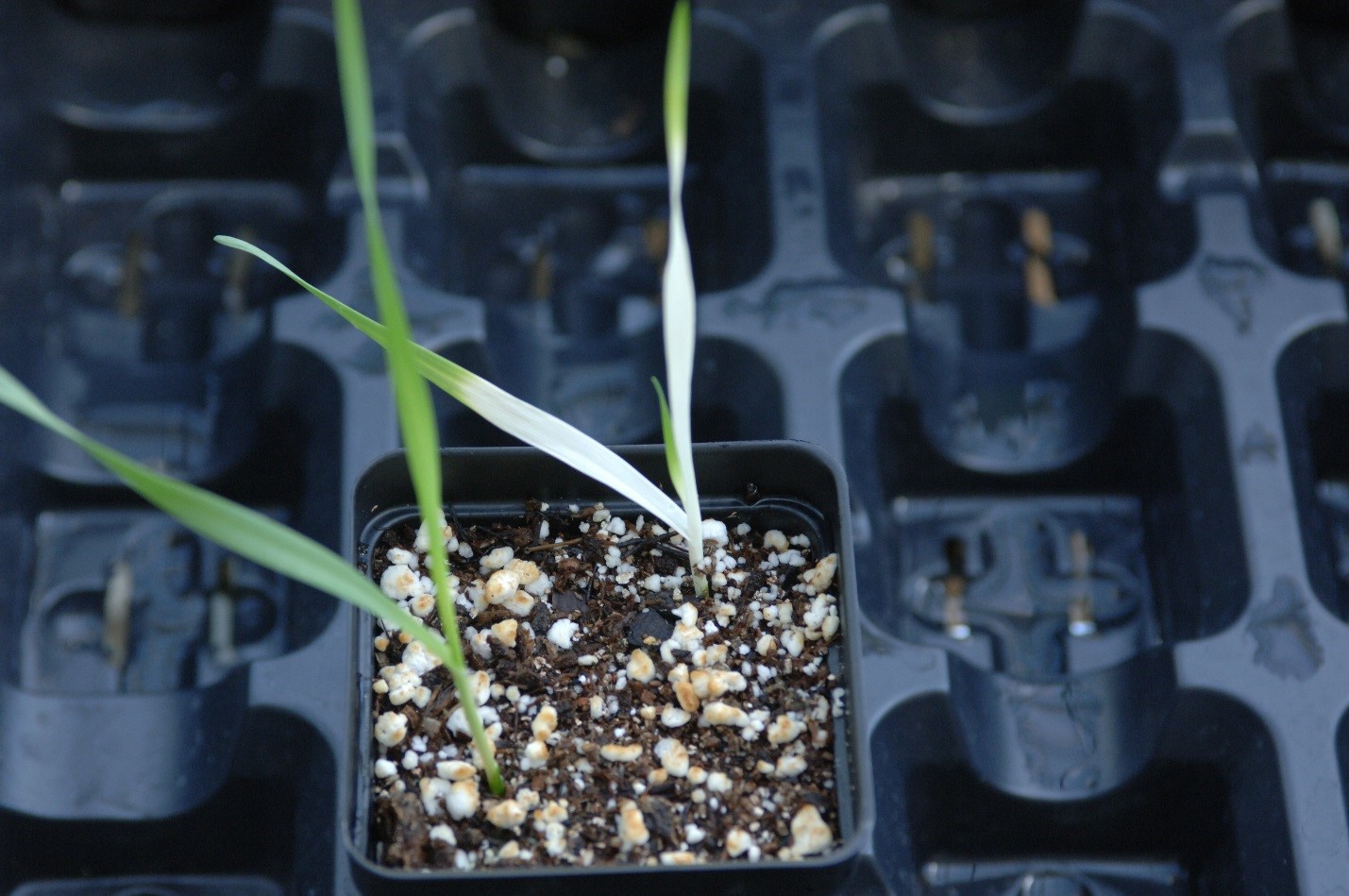
A partially albino wheat trait.
Transgenic (aka GMO) approaches: This technology allows a breeder to find a gene of interest and directly insert it into the desired plant. This is termed transgene (trans means move) as the gene comes from one plant and moves to another. The gene could come from the same species or not. This greatly reduces the time it takes to get a desired trait, makes the breeding more precise, and allows one to generate traits that are not otherwise available to a species. I won’t get into the merits of this approach, but the controversy of the technology boils down to whether the new trait would have unintended consequences either due to the gene transfer or the effect of the gene on other plant processes. Examples of current transgenic technologies include many of the herbicide resistance traits, insect resistance, and drought tolerance.
Gene Editing: This technology is relatively new and consists of different methods. The simplest form of gene editing is turning a gene off. Many plants contain genes that are not desirable for their end use in either food, feed, fiber, or fuel. Gene editing can change the sequence of that gene so it no longer works. One of the early successes with that technology are non-browning apples. In this case, there is no transgene, so proponents want to categorize it similar to traditional methods of breeding. There are some instances of gene editing where new DNA segments can be inserted to change the function of a gene. That is where things get more complicated. At any rate, the technology allows breeders to make very rapid and relatively cheap improvements compared to either traditional or transgenic approaches. Thus, many see this as the way of the future. The European Union, and other places, view this technology in the same way as transgenic crops for regulatory purposes. Next year, some of the first commodity crops will be sold with this technology.

DNA sequence alignment for a gene of interest.
No matter your view on these various technologies, it is important to understand the similarities and differences of each. How the global market and local consumers will respond remains to be seen.
If you’ve made it this far, congratulations. Here are my attempts at gene hacking:
I Dream of Gene-ie
Gene-glebell Rock
Gene of Thrones
To Gene or not to Gene
Gene Means Go
Gene in the Sky with Diamonds
Jolly Gene Giant
Gene and Order: DNA
Mike Ostlie, Ph. D.
mike.ostlie@ndsu.edu
Research Agronomist
Early Planted Soybean Continues to Produce Better Yields in North Dakota
Background
- Research conducted at the Carrington REC (Carrington) and the Oakes Irrigation Research Site (Oakes) in 2018 support yield benefits from planting soybeans early (early to second week of May), compared to normal (mid-May to about May 25) planting dates used a decade or more ago.
- Trials were established at Carrington under dryland and irrigated conditions and at Oakes under irrigation on three planting dates.
Results
- Soybean yields improved significantly from planting early under dryland in 2018 at Carrington (Figure 1). Under irrigation, yields were not different.
- At Oakes, yields were greater for normal and early planted soybeans than late planting.
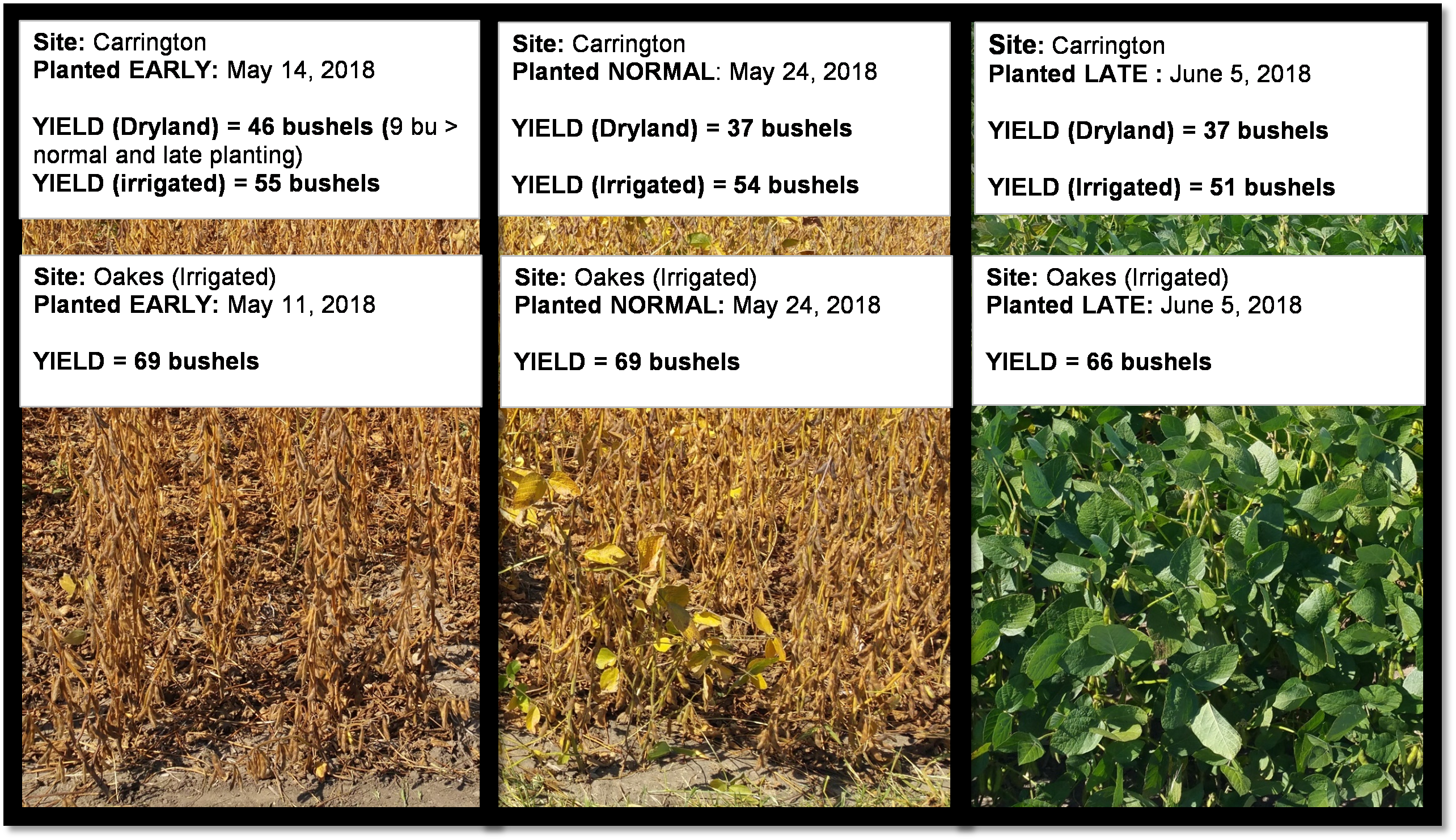
Figure 1. Soybean yields at three planting dates at Carrington and Oakes (2018).
Key Point:
- Planting soybean early is critical to maximizing yield. This was observed in our 2017 study and has been reported in other studies including this 2016 Center Points post by Greg Endres: https://www.ag.ndsu.edu/carringtonrec/center-points/soybean-planting-date. Based on our results, planting in the second week of May will likely produce better yields than after May 14th.
Jasper M. Teboh, Ph.D.
Jasper.Teboh@ndsu.edu
Research Soil Scientist
Have You Ever Wondered?
Have you ever sat and pondered how Center Points gets to you each week? Most of the push behind Center Points is Mary Keena. (You might know her as Mary Berg, but Mary got married this fall. Same Mary, new name, pretty ring, nice guy, that Nick!)
About once a quarter, Mary sends us all an email, asking for volunteers to write weekly blogs. There are only a few rules. The blog can’t be too long, or you won’t want to read it. Some pictures are nice, if they pertain to the subject at hand, because sometimes that’s all the time you (the reader) have.
The copy needs to be submitted to Mary with a little time for quick edits, double-checking that we remembered to develop captions for images, and so Mary can do the behind-the-scenes magic to actually post (publish) the blog and then write a quick email reminder to send to the listserv.

Wish you were part of the listserv? Subscribing is as easy as 1-2-3:
- Send an e-mail to Listserv@listserv.nodak.edu
- Leave the subject line of the email blank
- In the body (not the subject line) of the e-mail enter the following:
SUB NDSU-CARRINGTONREC-CENTERPOINTS yourfirstname yourlastname
Or:
Simply send a regular email to Mary.Keena@ndsu.
Already getting the emails? Great, maybe you want to share this information with a friend or colleague!
We like it best when you let us know what you want to know. So if you click this link https://goo.gl/forms/5xz8I3p7PZWL7I5h1 you will be able to suggest a topic and Mary will see if someone at the CREC can cover it.
As always, if you have specific questions you can always contact your local Extension agent or call us at 701-652-2951.
Linda Schuster
linda.schuster@ndsu.edu
Administrative Secretary
Sulfur Improved Grain Yields of Malting Barley (Tradition and ND Genesis)
Rationale
Farmers are faced with steep premium deductions if barley produced for malt has protein levels that are high, usually greater than 13%. Farmers therefore have to keep N rates high enough to maximize yields, but low enough not to enhance protein above thresholds susceptible to premium deductions. Sulfur is applied to barley to enhance yields, but it is anecdotally believed by a few producers that application of sulfur causes their grain protein to increase.
Objectives
- To examine how sulfur (S) fertilization affects barley yield and grain protein
- To verify whether two common barley varieties differ in their response to S
Method
- Varieties grown: ND Genesis (2-row variety) and Tradition (6-row variety) shown in Figure 1.
- Sulfur treatments: 0, 10, 20, 30 lbs S/ac (applied and incorporated as ammonium sulfate)
- The effects of these S rates were evaluated at three N rates (30, 60, 90 lbs/ac), to examine if grain response would be different for the different soil N levels
- Soil N at planting was 39 lbs/ac. Soil test results for S is not reported because it is not reliable.
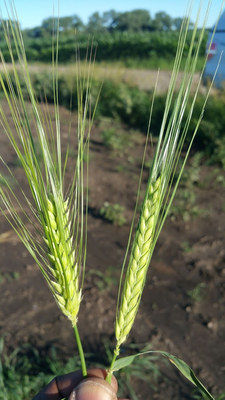
Figure 1. Heads of 6-row (Tradition, left) and 2-row (ND Genesis, right) barley.
Results
- Sulfur significantly improved grain yields (Figure 2). On average, yields improved by 4 bushels due to S
- Grain protein was not affected by S
- Yields of the two varieties were not different (about 86 bushels each on average)
- Grain protein was significantly less for ND Genesis (11.28%) than for Tradition (13.02%). Note that for malting barley, low grain protein at about 11 to 12% is of better quality than at 13% or above
- Yields were not different between 30, 60, or 90 lbs N. Total N removed with the grain (averaged between 60 and 90 lbs N rates) ranged from 110 lbs at 0 lbs S, to 115 lbs N removed at 30 lbs S.
Observations
- Sulfur did not affect grain protein. A possible reason is that, if more N is taken up because of applied S, the additional N is probably going towards yield improvement rather than towards protein
- Consider applying 10 pounds of S as a sulfate or thiosulfate form before or at seeding
- Sulfur is recommended for barley because it has potential to improve yields. Several conditions could limit S availability, and therefore would warrant fertilization. These conditions include high clay and sandy soils, soils with high soil organic matter, pre-season normal to high snowfall or rainfall, etc. More information is available on fertilizing malting and feed barley by Dr. D. Franzen and Dr. R. Jay Goos at: (https://www.ag.ndsu.edu/publications/crops/fertilizing-malting-and-feed-barley#section-8)
Jasper M. Teboh, Ph. D.
jasper.teboh@ndsu.edu
Research Soil Scientist


